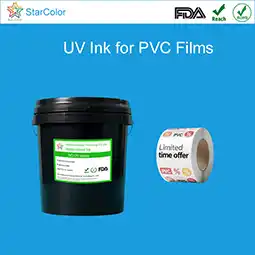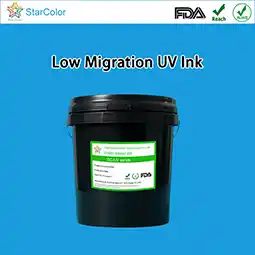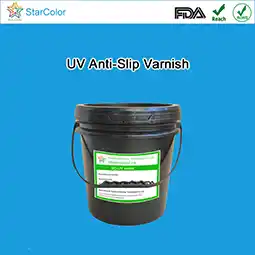Is offset printing ink food grade?
Date: Oct 19 2024 From: Star Color Views:
Many assume "offset ink = food-grade." This misconception can create regulatory and safety risks when ordinary offset inks are used on food packaging. This article defines food-grade ink, examines offset ink chemistry and process limits, and gives a clear answer about when offset inks may be appropriate for food packaging.
1. What is a “Food-Grade Ink”?
Not every ink used on food packaging is “food-grade.” A true food-grade ink must simultaneously meet three core requirements:
- Migration safety: its components and any residuals must not migrate into food at levels that pose a health risk;
- Compositional compliance: ingredients (resins, solvents, additives, pigments) must be permitted under relevant regulations;
- Use-case suitability: the ink must be appropriate for the intended contact scenario (direct or indirect contact).
Food-grade status is confirmed only after testing against authoritative standards.
Key standards that define food-grade inks
- China — GB 4806.14-2023: total migration ≤ 10 mg/dm² (infant products ≤ 60 mg/kg after conversion); heavy metals (Pb, Cd, Hg, As) ≤ 1 mg/kg; total aromatic primary amines ≤ 0.01 mg/kg. Prohibits use of certain toxic solvents (e.g., benzene, ketones).
- EU — Regulation (EU) No 10/2011: positive lists for permitted substances; photoinitiator total migration ≤ 0.6 mg/kg; certain restricted substances ≤ 0.05 mg/kg.
- USA — FDA 21 CFR 175.300: specifies allowed resin types and requires simulated food-contact testing; solvent residue guidance (e.g., residues to be controlled to safe limits).
Conclusion: “Food-grade” is a certification achieved by meeting these standards — it is not an intrinsic attribute of a given ink technology.
2. Why Most Offset Inks Are Not Food-Grade
The offset printing principle (oil vs. water immiscibility) and typical offset ink formulations create inherent challenges for meeting food-grade requirements.
2.1 Typical offset ink components and associated risks
- Solvents — high VOCs and toxic species: Traditional offset inks are often solvent-based. Solvents such as toluene, xylene or ethyl acetate are used to adjust viscosity and drying; VOC content can reach 300–500 g/L, far above typical food-grade limits. Toxic solvents may leave residues (>5 mg/m²) that can migrate into food and pose chronic health risks.
- Resins — migration potential: Rosin (colophony) rosin esters and phenolic resins are common offset binders. While they provide good adhesion, some resin constituents may migrate in acidic environments or release trace contaminants (e.g., formaldehyde in certain phenolic systems), contradicting “low migration” requirements.
- Additives — hidden hazards: Drying agents, anti-skin agents, or certain surface-active additives may contain metals (cobalt, manganese) or other chemistries that risk exceeding migration or heavy-metal limits.
2.2 Process limitations of offset printing
- Solvent-based drying: Offset commonly relies on solvent evaporation for drying. Drying is relatively slow and depends on shop ventilation. Residual solvent in ink pores and substrate can be difficult to eliminate to ≤5 mg/m² consistently with standard offset lines.
- Multi-pass overprint: Offset frequently uses multi-color overprinting. If earlier colors are not fully dry, transfer or solvation of compounds between layers may occur (“set-off” or contamination), increasing migration risk.
3. Are There Food-Grade Offset Inks?
Not categorically impossible. With targeted R&D and strict production controls, some offset inks have been engineered to meet food-contact standards — but they require substantive formulation and process changes and have limited application scopes.
3.1 How offset inks can be made food-grade (technical routes)
- Formulation upgrades: Replace hazardous solvents with water or low-VOC co-solvents to reduce VOCs to ~50–80 g/L; use food-approved resins (e.g., acrylic-polyurethane hybrids compliant with FDA 21 CFR 175.300); select organic pigments and strictly food-approved additives (no heavy metals, no banned solvents).
- Process upgrades: Adopt UV curing (UV offset) to replace solvent evaporation with radical crosslinking — this can yield VOC ≤ 50 g/L and residuals ≤ 1 mg/m². Implement closed, clean ink supply systems and controlled drying/cure regimes to stabilize migration performance.
3.2 Practical application boundaries for food-grade offset inks
Even when technically compliant, offset ink use is usually limited to indirect food contact applications, for example:
- Outer surfaces of corrugated boxes (shipping cartons) where an inner barrier (linerboard, PE liner or barrier film) separates printed layers from food;
- External labels applied to packaging exteriors (labels that are not in direct contact with food), where the label and package structure create a barrier.
Offset inks — even food-grade variants — are generally not recommended for inner layers or direct food contact surfaces (e.g., inner liners, tray surfaces) where zero or near-zero migration is required. For such scenarios, food-grade flexo water-based inks or UV flexo inks are typically preferred.
4. Practical Takeaway
So, is offset ink food-grade? The short answer: Ordinary offset inks are not food-grade. Only specially reformulated and tested offset inks can achieve food-grade certification, and even then they are usually restricted to indirect contact uses and require strict production controls and verified testing against standards (GB 4806.14-2023, EU 10/2011, FDA 21 CFR 175.300).
If food-contact packaging is a project requirement, follow this checklist:
- Specify the required food-contact standard (regionally appropriate).
- Request the ink supplier’s full compliance documentation (migration reports, resin approvals, heavy-metal tests).
- Prefer printing technologies designed for low migration (food-grade flexo water-based, UV flexo) for inner layers or direct contact surfaces.
- Where offset is considered, validate via third-party migration testing and adopt process controls (UV curing, closed ink systems, validated drying) before approval.
 RU
RU EN
EN CN
CN















